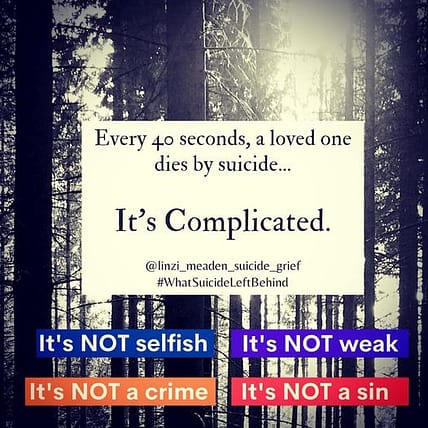The Impact of Suicide on Communities
Suicide is not just a personal tragedy; it reverberates throughout entire communities, affecting friends, family, and colleagues. Understanding this impact is crucial for fostering a supportive environment where individuals feel safe to discuss mental health challenges.
Statistics show that for every suicide, at least six people are profoundly affected, leading to a ripple effect of grief and confusion. By raising awareness about these effects, we can encourage community members to engage in open conversations about mental health and provide necessary support to those in need.
Recognizing the Signs of Mental Health Struggles
Identifying the signs of mental health struggles can be pivotal in preventing suicide. These signs may include changes in behavior, withdrawal from social interactions, and expressions of hopelessness. Educating the public on these indicators can help save lives.
For instance, a person who previously enjoyed social gatherings may suddenly isolate themselves, signaling a need for support. Training community members to recognize these signs can empower them to reach out and offer help, ultimately creating a more connected and aware community.
Resources for Suicide Prevention and Support
Access to resources is essential for individuals facing mental health challenges or coping with the aftermath of suicide. Various organizations provide hotlines, counseling services, and educational materials to assist those in need.
For example, the National Suicide Prevention Lifeline offers 24/7 support, while local mental health organizations may host workshops and support groups. Sharing these resources widely can ensure that individuals know where to turn for help and guidance during difficult times.
How to Support a Loved One in Crisis
Supporting a loved one in crisis requires sensitivity, understanding, and knowledge of effective communication strategies. It's important to approach the situation with empathy and without judgment, creating a safe space for open dialogue.
Encouraging them to express their feelings and actively listening can make a significant difference. Additionally, guiding them towards professional help and being there for them throughout their journey can foster healing and recovery, reinforcing the message that they are not alone.
The Impact of Suicide on Communities
Suicide is not just a personal tragedy; it reverberates throughout entire communities, affecting friends, family, and colleagues. Understanding this impact is crucial for fostering a supportive environment where individuals feel safe to discuss mental health challenges.
Statistics show that for every suicide, at least six people are profoundly affected, leading to a ripple effect of grief and confusion. By raising awareness about these effects, we can encourage community members to engage in open conversations about mental health and provide necessary support to those in need.
Recognizing the Signs of Mental Health Struggles
Identifying the signs of mental health struggles can be pivotal in preventing suicide. These signs may include changes in behavior, withdrawal from social interactions, and expressions of hopelessness. Educating the public on these indicators can help save lives.
For instance, a person who previously enjoyed social gatherings may suddenly isolate themselves, signaling a need for support. Training community members to recognize these signs can empower them to reach out and offer help, ultimately creating a more connected and aware community.
Resources for Suicide Prevention and Support
Access to resources is essential for individuals facing mental health challenges or coping with the aftermath of suicide. Various organizations provide hotlines, counseling services, and educational materials to assist those in need.
For example, the National Suicide Prevention Lifeline offers 24/7 support, while local mental health organizations may host workshops and support groups. Sharing these resources widely can ensure that individuals know where to turn for help and guidance during difficult times.
How to Support a Loved One in Crisis
Supporting a loved one in crisis requires sensitivity, understanding, and knowledge of effective communication strategies. It's important to approach the situation with empathy and without judgment, creating a safe space for open dialogue.
Encouraging them to express their feelings and actively listening can make a significant difference. Additionally, guiding them towards professional help and being there for them throughout their journey can foster healing and recovery, reinforcing the message that they are not alone.

